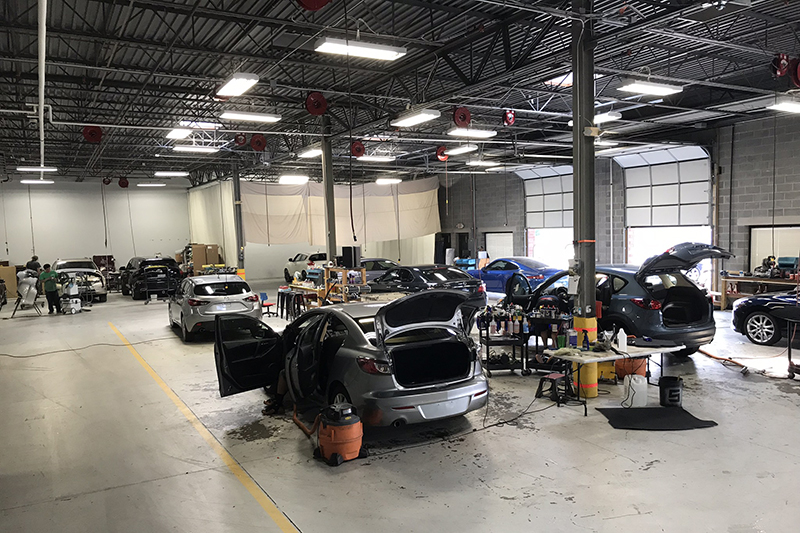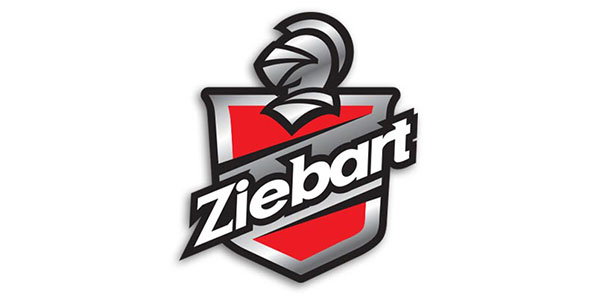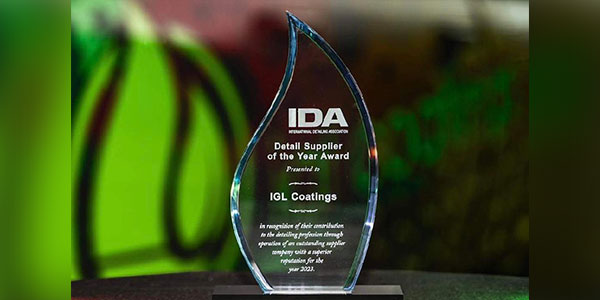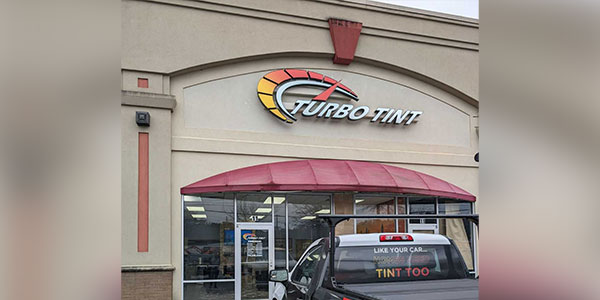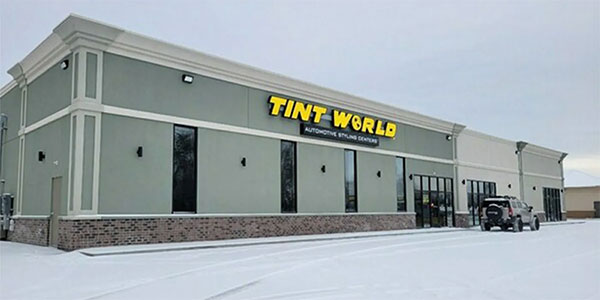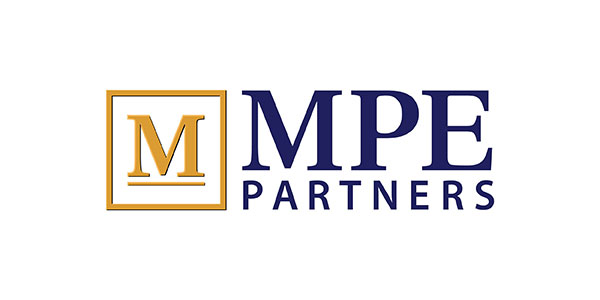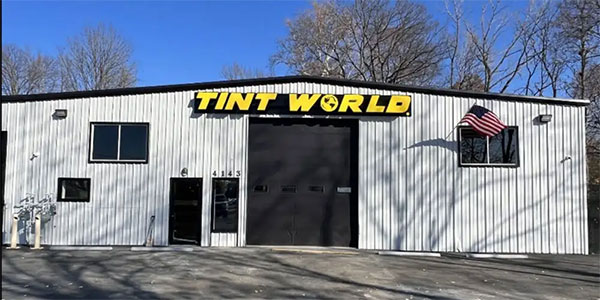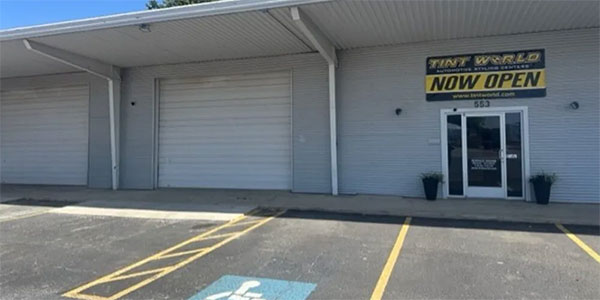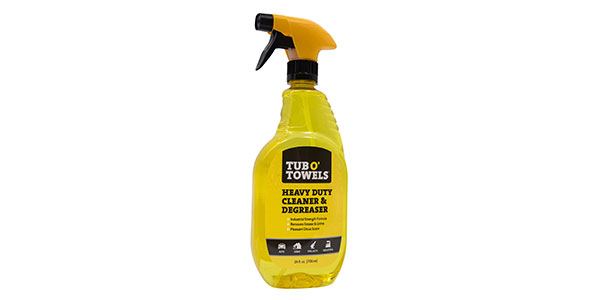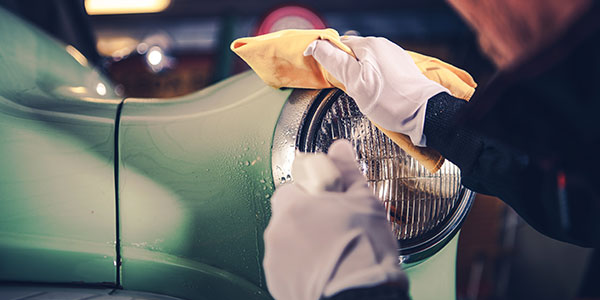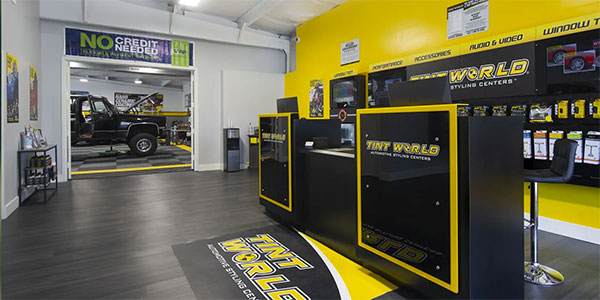Back in 2012, when my partners and I became the first tenants of 15,000 square feet of warehouse space in Ashburn, Virginia, with 18-foot ceilings and five roll-up bay doors, we didn’t know exactly how we might look eight years later. What we did know was that a space of this size and scale would fit the bill perfectly for our business.
How we used our square footage would be crucial, if we were going to be the high-end auto restorer and detailer we are today. We knew that to earn and retain detailing, protective services, paint and collision repair business in this market — both for commercial and private automotive customers — our site needed to be designed for efficiency and effectiveness.
We think it’s working. When we opened, we were servicing about 120 cars per month; today, we’re approaching 340 cars per month, servicing everything from Volkswagens to Bentleys. We believe our site design — combined with our amazing crew of 15 talented, dedicated employees — helps us produce fantastic-looking cars.
Even so, as shop owners, we all know the main causes of inefficiencies: repeating tasks, retrieving tools, having things in the way and so on. We’ve made significant investments to enhance our layout and amenities, allowing us to reduce those inefficiencies and increase our workflow.
Design the shop like a conveyor belt
New customers are offered a guided tour of our shop. That’s not typical; however, we want them to see where their cars will be and what services they will receive. One of the most common reactions is, “Wow, I had no idea you could get so many cars in here.”
We can fit up to 22 cars inside our shop at any given time. Obviously, the route each car takes depends on which services it requires, but our site has been designed to allow cars to flow from the wash and detail stations in the front to the paint and body stations in the back (as needed), then out past the photo booth.
The key is getting each car in, getting everything done right and getting it out. With yellow stripes leading the way from one station to the next, we’ve designed our site so that a car enters one door, goes to every station it needs in the right order and exits another door — efficiently and effectively.
It starts with doors
One of my favorite things about our facility is that there’s no loading dock, meaning our shop floor is level with the ground outside. Five massive doors open to bays measuring 100 feet by 30 feet, so our site allows cars to move easily into or out of any part of the shop.
About 99.9% of the time, we’re using just three of the five bay doors, with one of those leading directly to the wash station. The second leads straight to the detailing stations, and the third provides a direct path to the paint, dent and body stations.
Arrange stations logically
We are literally a one-stop shop, offering a variety of services: paint work, dent repair, minor and major collision, full detailing, paint correction, protective services, photography services, etc. Some customers need one service, while others need all.
We’ve positioned our stations in a logical order, putting wash and detail in the front and paint, dent and body toward the back. Cars needing paint or body work will go there first, because it’s going to get dirty over there. Some space we keep flexible. For example, the photography area can be used for paint and body work on weekends, as long as it’s all cleaned up and ready for its intended use by Monday.
One recent example: We reconditioned a wholesale vehicle that needed matching paint on its bumpers and corner panels, several dents pulled out, a full detail and high-resolution photographs. First, it went back to the body shop for tear down (disassembly) and repair, then into the paint booth for color match and refinishing, then back into the shop to finish with trim out (reassembly) and post paint production. After that, the vehicle went to the wash station and detail side for a full interior and exterior detail and polishing. Finally, the car was ready for its close-up, so it was driven behind the curtains into our state-of-the-art photo booth and then out the door.
Keep your tools close
Whenever your employee has to walk away to get something, even if it takes 15 seconds, that’s unproductive time, and it adds up. We’ve eliminated that waste with tool carts for every employee, so they can bring everything they need to any location in the shop.
We also give our staff access to air and electricity wherever they are, through ceiling-drop cables over every station. This keeps our workers working on the cars, not walking to plug things in.
The health of our workers is valuable, so we’ve installed A-frames in the detailing station. These let us hang floor mats vertically, so our team doesn’t need to bend down to clean them — plus, they provide an excellent central location for bulk shop supplies.
Our detailers also utilize tools that emit highly pressurized air that produces a better, faster clean. These tools have trimmed our detailing time by about a quarter of a car each day. With seven detailers, that means 35 cars per month can go out the door sooner.
Not only do you need the right tools for the job, but you also need those tools to be where the job is. By keeping parts and supplies of consumable inventory close and visible, you help ensure you never make the fatal mistake of running out.
Let there be light
We think a well-lit, well-spaced shop makes our job easier. Though we’re challenged by our facility’s height, we’ve made sure to install plenty of bright lights all over the ceiling.
Recently, we installed a series of super-bright LED light fixtures with a color temperature of 5,000 Kelvin to simulate daylight, letting us see how that paint job or dent repair will appear in the open sun, no matter the weather outside. We also have a couple of hand-held specialized color correct “sun lamps” for closer inspections for color-matching and paint correction.
We’ve also kept several fluorescent lights up there, because they show imperfections. If it’ll look good under fluorescents, it’ll look amazing in the sun.
Dust reduction
Dust happens, of course. Services like heavy body work and dent repair can produce copious amounts of dust. If you’re also painting, washing and photographing in the same shop, dust can significantly detract from quality.
That’s why we installed full-length curtains around the body station and both paint booth stations as well as another curtain wrapping around the detailing station. It doesn’t keep every mote of dust from escaping, but it blocks most of it for long enough to complete our work and turn out a dust-free finish.
Plans for future growth
As our company has grown, we’ve been able to utilize more of our space by offering additional services. This means more stations to be designed into our space.
In the back, between the enclosed paint booth and the body shop, we installed a frame machine with removable panels to allow us to elevate a car and easily get underneath it. We also located a vehicle lift in the back, so we can take off and put on wheels more efficiently and without breaking the backs of our team.
We put in a second paint booth in order to do more paint jobs each day, and we now have an enclosed prep station for quick, smaller jobs.
We also introduced wheeled jack stands to safely move around cars with their tires off. Before those, if a car had its tires off, it sat there until the tires went on. Wheeled jacks help us make the fullest use of our site.
Over the years, our shop has filled up with all these stations, but it’s important to keep enough space open to let your team do good work.
We’ve done a lot of growing at our shop, and we’re not done yet. With all the work out there for paint, body, minor repair and major collision, we’re looking for additional space for expansion.
When we do, it will be just as important to design our next space with the same degree of efficiency. In our next expansion, we will be seeking additional room for the body station, and we’d consider a gravity-fed oil-water separator for the wash station.
Since we’re always trying to smooth out the wrinkles in our process, we’re always talking with vendors and suppliers about innovations we might incorporate into our site layout, such as a spring-loaded pressure-washing wand mounted on a trolley that travels with the employee as he or she washes a car.
Innovations in our shop today have resulted in us being named Innovative Business of the Year in 2017 by the Loudoun County Chamber of Commerce. We are proud of that award, and it shows in our work.
While serving the automotive industry for the past 21 years, Daryl Collette achieved success growing AULMA from a small income company to the recent milestone of achieving nearly $2.5 million in annual revenue. Daryl cultivated this from signing one dealer franchise 16 years ago to today managing a portfolio of over 80 dealers. Daryl brings this experience and knowledge to his full service premium detailing and collision repair business, Automotive Quality Solutions (AQS).

